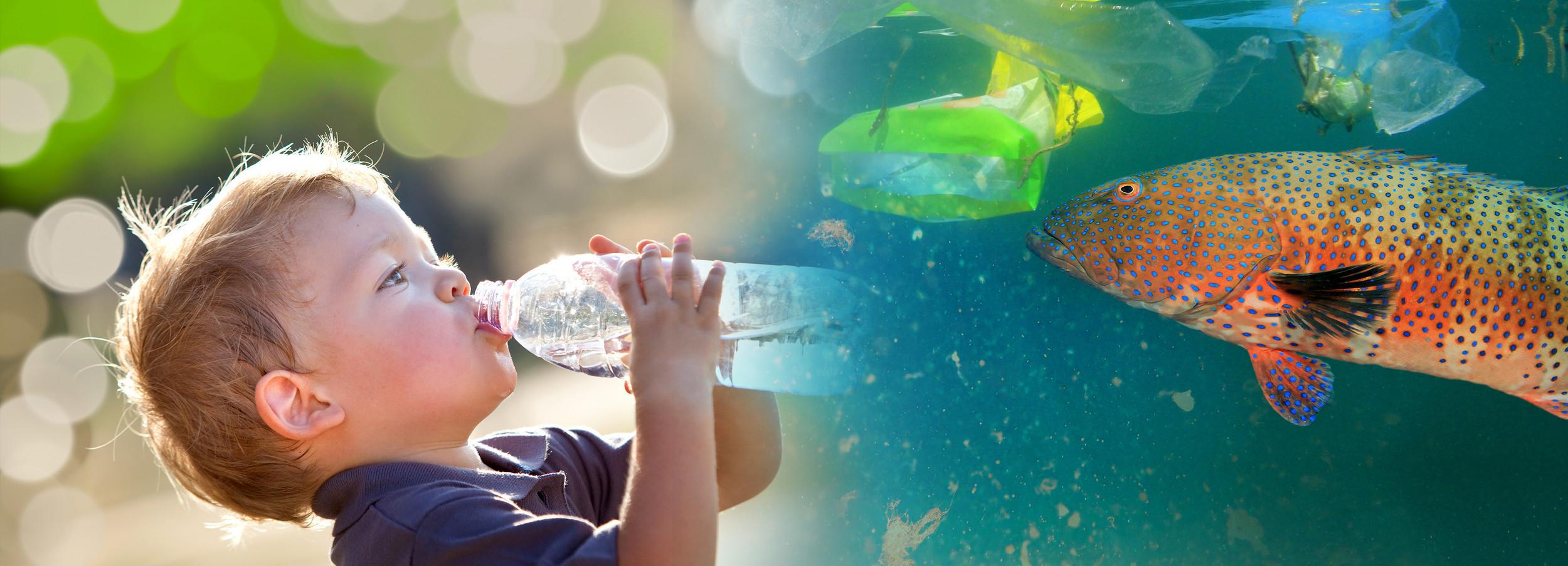
Testimonial from Elisabetta Giorgini, Polytechnic University of Marche (Ancona, Italy)
Elisabetta Giorgini and Valentina Notarstefano, Polytechnic University of Marche (Ancona, Italy)
I am Associate Professor of Inorganic Chemistry at the Polytechnic University of Marche (Ancona, Italy) and I am also Head of the Laboratory of Vibrational Spectroscopy at the Department of Life and Environmental Sciences. My research is focused on the application of Raman and Infrared spectroscopies to several biomedical, biological and chemical fields. My team is composed by Dr.Valentina Notarstefano, postdoctoral researcher who deals with Raman spectroscopy, and Dr. Alessia Belloni and Dr. Chiara Pro, Ph.D. students.
In literature, microplastics (MPs) are reported as fragments of man-made origins, with dimensions ranging from 5 millimeters to 0.1 micrometers. Their ubiquitous contamination of the environment is primarily due to a wrong disposal of plastic waste. In fact, MPs mainly come from the degradation of larger plastic fragments deriving by single-use products released in the environment. It is known that every year, about 320 tons of plastics are produced, and, among these, 40% are single-use products. MPs can be classified as primary microplastics, that are micro-sized particles produced for commercial purposes, and secondary microplastics that derive from the action of atmospheric and environmental phenomena, such as waves, physical abrasion, ultraviolet radiation, and photo-oxidation, which, combined with the action of bacteria, are able to degrade plastic fragments into smaller ones.
In the last years, we have investigated several aspects regarding Reproductive Biology by using FTIR and Raman spectroscopies. In this light, we wondered if the ubiquitous microplastics contamination could also affect a human placenta. The choice to investigate the possible presence of MPS in placenta relies in the crucial role played by this organ; it represents a barrier between the fetus and the external environment and, hence, it protects fetus from external agents. The study has been carried out in collaboration with the research team of Dr. Antonio Ragusa, Head of the Department of Obstetrics and Gynecology at the San Giovanni Calibita Fatebenefratelli Hospital in Rome.
Microplastics in human placenta
The study has been recently published on the prestigious peer-reviewed journal ‘Environment International’. Human placentas were collected from six women immediately after delivery and were portioned into foetal side, maternal side and chorioamniotic membranes. All samples were digested and filtered according to a well-established and plastic-free protocol. Then, filters were analyzed by Raman Microspectroscopy first to detect, by a x100 magnification, the presence of possible MPs, and then, to characterize its chemical composition. In total, 12 microparticles were found in four placentas, homogeneously distributed among foetal and maternal sides and chorioamniotic membranes. All these MPs were characterized in terms of polymeric matrix and/or pigments: four were pigmented polypropylene, while for the other eight, only the pigment was identified. This is not surprising since microparticles can derive from both plastic objects and coatings and paints; moreover, in some cases, the spectral features of pigments can cover those from the polymer itself.
To the best of our knowledge, there is only another study reporting the presence of microplastics in human colectomy samples (YS Ibrahim et al., JGH Open, 5, 2021, 116-121). This is not surprising since food and beverages can be easily contaminated by MPs and, hence, the gastrointestinal tract may be considered as the first district in terms of exposure to microplastics.
In our study, for the first time, microplastics were detected in a human placenta, an organ that is not directly involved in any kind of exposure. This makes us conscious of how ubiquitous MPs are and makes mandatory to further investigate the presence of MPs in all human districts. Their micrometric dimensions let MPs access the bloodstream and potentially reach the majority of human districts. Moreover, their presence could trigger altered immune responses, or cause the release of toxic contaminants.
For this study, we selected Raman Microspectroscopy. This is a powerful and well-established tool for the morpho-chemical analysis of micrometric particles. Given the physical nature of RMS, it is possible to perform the analysis directly on the filter, regardless of its chemical composition, letting detect particles with a spatial resolution of ca. 1 micron.
Thanks to the grant “Progetto MIUR Dipartimenti di Eccellenza” obtained by our Department two years ago, we had the opportunity to improve our instrumentation. Among all, we considered crucial for the research performed in our Department, to purchase a Raman Microspectrometer. The choice of a HORIBA Jobin Yvon spectrometer was based by comparing the top-quality instrumentation commercially available and also by our personal experience. In fact, Dr. Notarstefano spent some months at the FOCAS Research Institute (TU Dublin) under the supervision of Prof. Hugh J. Byrne, who introduced her to the use of Raman spectroscopy in the biological field.
Our research around microplastics is also focused on marine organisms. At this purpose, we have recently published on the peer-reviewed journal Water, Air, & Soil Pollution, a study on the presence of microplastics, detected by Raman and FTIR microspectroscopies, in the gastrointestinal tract of beached turtles (Caretta caretta) from the Adriatic Sea.
Yes, of course. The next level of the research on MPs will be mandatorily focused on nanometric particles, paving the way to new approaches which let understand the effects of nanoparticles at cellular level. To this aim, it is fundamental the combination of Raman technology with AFM microscopy, to perform, for example, TERS measurements.
Sie haben Fragen oder Wünsche? Nutzen Sie dieses Formular, um mit unseren Spezialisten in Kontakt zu treten.

